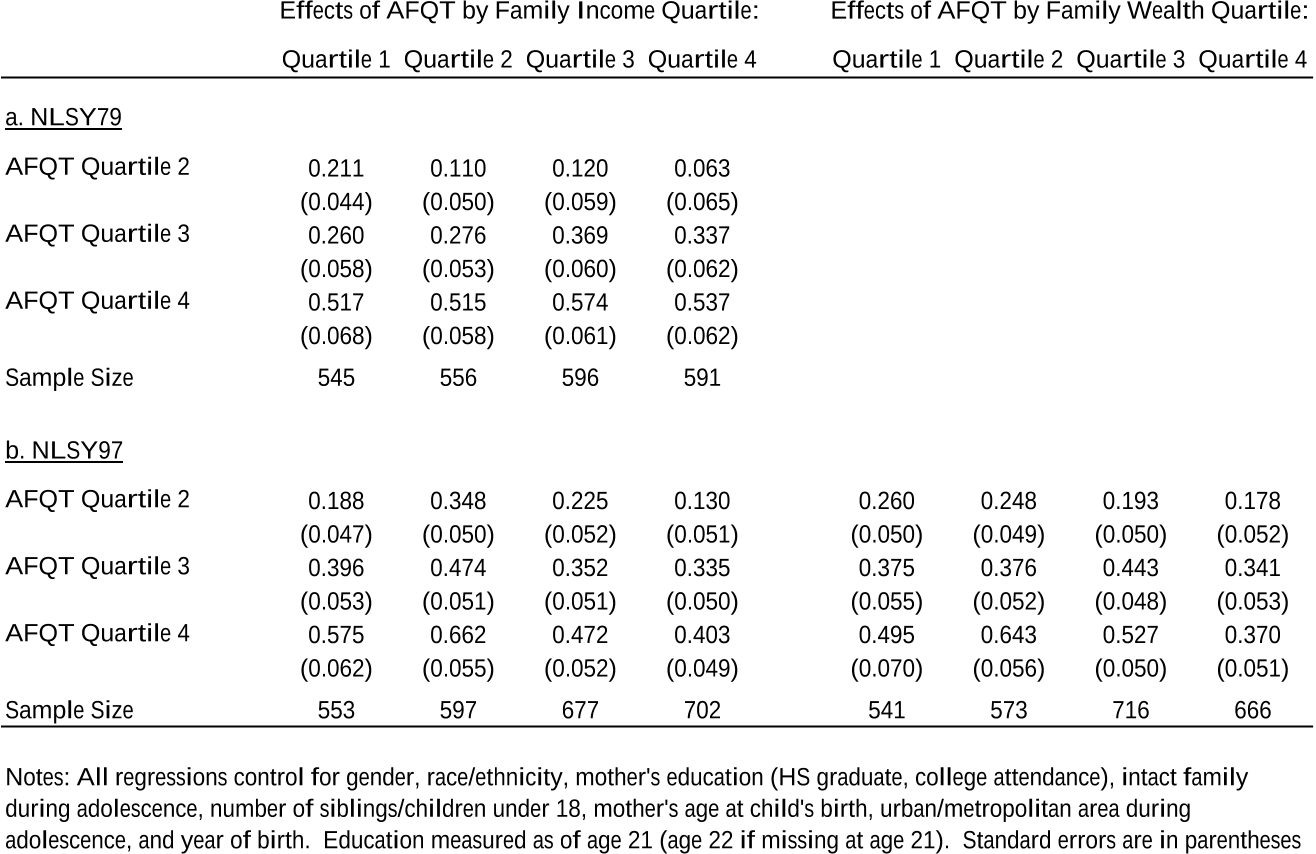The Nature of Credit Constraints and Human Capital
Reads0
Chats0
TLDR
This paper developed a human capital model with borrowing constraints explicitly derived from government student loan (GSL) programs and private lending under limited commitment, which helps explain the persistent strong positive correlation between ability and schooling in the U.S., as well as the rising importance of family income for college attendance.Abstract:
We develop a human capital model with borrowing constraints explicitly derived from government student loan (GSL) programs and private lending under limited commitment. The model helps explain the persistent strong positive correlation between ability and schooling in the U.S., as well as the rising importance of family income for college attendance. It also explains the increasing share of undergraduates borrowing the GSL maximum and the rise in student borrowing from private lenders. Our framework ofiers new insights regarding the interaction of government and private lending as well as the responsiveness of private credit to economic and policy changes.read more
Figures

Table 3: Baseline Model Parameters 
Figure 4: dU , hU , hX , and hG for high wealth individuals (w > w̄) 
Figure 3: dU , hU , hX , and hG for low wealth individuals (w ≤ w̄) 
Figure 8: ‘Year 2000’ GSL and Private Lending Constraints 
Figure 9: Private Borrowing (‘Year 2000’) 
Table 2: Estimated Effects of AFQT on College Attendance by Family Income and Wealth (NLSY79 and NLSY97)
Citations
More filters
Journal ArticleDOI
Consumer Bankruptcy: A Fresh Start
TL;DR: In this article, a quantitative model of consumer bankruptcy with three key features: life-cycle component, idiosyncratic earnings uncertainty, and expense uncertainty is presented, and the authors find that transitory and persistent earnings shocks have very different implications for evaluating bankruptcy rules.
Journal ArticleDOI
Student Loans: Do College Students Borrow Too Much--Or Not Enough?
Christopher Avery,Sarah Turner +1 more
TL;DR: In this paper, the authors move the discussion of student loans away from anecdote by establishing a framework for considering the use of student loan in the optimal financing of collegiate investments and show that enrolling in college is equivalent to signing up for a lottery with large expected gains, but it is also a better investment today than a generation ago.
Journal ArticleDOI
The Effect of Credit Constraints on the College Drop-Out Decision: A Direct Approach Using a New Panel Study
TL;DR: In this paper, a study of Berea College students suggests that while credit constraints likely play an important role in the dropout decisions of some students, the large majority of attrition of students from low-income families should be primarily attributed to reasons other than credit constraints.
Journal ArticleDOI
The Returns to College Admission for Academically Marginal Students
TL;DR: The authors combine a regression discontinuity design with rich data on academic and labor market outcomes for a large sample of Florida students to estimate the returns to college admission for academically marginal students.
ReportDOI
Credit Constraints in Education
TL;DR: In this article, the authors review studies of the impact of credit constraints on the accumulation of human capital and highlight the importance of early childhood investments, as their response largely determines the impact on the overall lifetime acquisition of human resources.
References
More filters
Posted Content
The Dynamics of Educational Attainment for Blacks, Hispanics, and Whites
TL;DR: The authors investigated the sources of discrepancy by race and ethnicity in college attendance and found that long-run factors associated with parental background and income and not short-term credit constraints facing college students are the main factors that account for the differential response by races and ethnicity to the new labor market for skilled labor.
Journal ArticleDOI
Human capital investment and debt constraints
David Andolfatto,Martin Gervais +1 more
TL;DR: The authors showed that the desirability of such a cradle-to-grave policy depends crucially on the assumption of an exogenous debt constraint, and that the constrained-optimal policy entails zero intervention.
ReportDOI
Human capital formation with endogenous credit constraints
TL;DR: Monge and Lochner as mentioned in this paper also benefited from discussions with Gadi Barlevy, Marco Bassetto, Cristina de Nardi, AndresErosa, Jeremy Greenwood, Rick Hanushek, Jim Heckman, Tim Kehoe, Narayana Kocherlakota, ChrisPhelan, Ed Prescott, Hugo Rodriguez and Chris Taber.
Trends in Undergraduate Borrowing: Federal Student Loans in 1989-90, 1992-93, and 1995-96. Statistical Analysis Report. Postsecondary Education Descriptive Analysis Reports.
Lutz Berkner,Larry Bobbitt +1 more
Posted Content
A New Test of Borrowing Constraints for Education. NBER Working Paper No. 14879.
TL;DR: In this paper, the authors discuss a simple model of intergenerational transfers with one-sided altruism: parents care about their child but the child does not reciprocate, and they show that for an identifiable set of parent-child pairs, parents will rationally under-invest in their child's education.
Related Papers (5)
The Evidence on Credit Constraints in Post-Secondary Schooling†
Pedro Carneiro,James J. Heckman +1 more